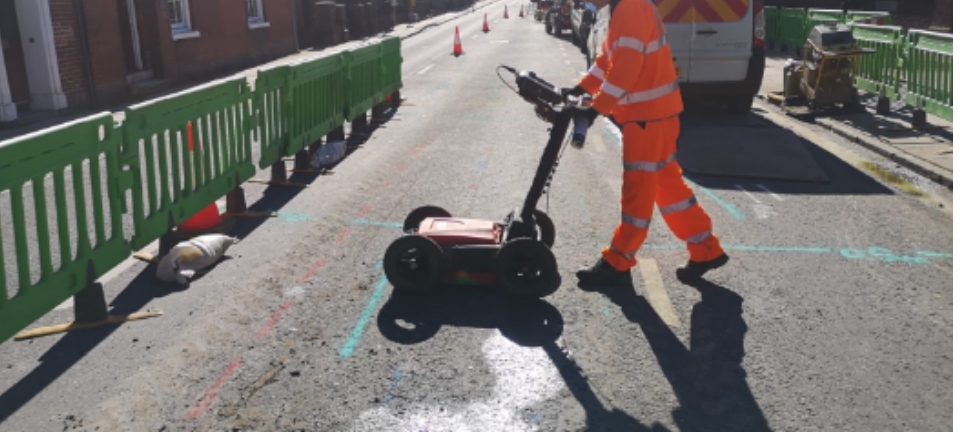Under this Surface: Exploring GPR Uses in Geophysics

GPR, often referred to as GPR, has emerged as a crucial tool in geophysics, offering a view of what lies beneath the Earth's surface. As GPR Survey Droitwich Spa for precise and efficient surveying techniques grows, GPR surveys have gained significant traction across various industries. But what precisely is a GPR survey, and why is it essential? This technology allows for non-intrusive exploration of sub-surface structures, uncovering everything from utilities and archaeological artifacts to geological formations and potential hazards.
The value of GPR surveys cannot be overstated. They offer numerous benefits in underground detection, aiding in construction and engineering projects by providing vital information before ground disturbance. Comprehending the technology behind GPR is crucial for anyone looking to utilize it effectively. In this article, we will delve into the practical applications, advantages, and considerations of GPR surveys, providing you with the knowledge needed to maneuver through this advanced field and make informed decisions for your projects.
Understanding GPR Technology & the Significance
GPR, often referred to as Ground Penetrating Radar, is a non-destructive geophysical method which utilizes EM radiation to map below-surface features. This technology works by transmitting radar pulses through the ground and recording the reflected signals from multiple underground materials. The time it requires for the reflections to return is used to assess the depth level and makeup of the materials beneath, allowing for a comprehensive study of what lies beneath the ground eliminating the need for excavation.
The importance of GPR technology is profound, particularly in domains including building, engineering, and archaeology. By delivering real-time data concerning subsurface conditions, GPR improves the decision-making process and lessens the risks linked to unforeseen subsurface challenges. Its ability to detect utilities, voids, and other key elements aids significantly in project planning and executing building endeavors while ensuring security and adherence with regulations.
Moreover, GPR technology provides a cost-effective alternative in comparison with conventional survey techniques. It reduces the likelihood for damage to existing structures and decreases the requirement for costly and time-consuming digging projects. As https://imoodle.win/wiki/Exploring_the_Subtleties_The_Effect_of_GPR_Investigations_on_Property_Development adopt cutting-edge technologies, the dependence on GPR surveys is expected to grow, making it an essential tool for experts seeking to optimize their projects and resources effectively.
Primary Uses and Perks of GPR Surveys
Ground Penetrating Radar technology surveys are essential in multiple fields, notably for their ability to identify and outline underground structures, utilities, and geological features. This technique is commonly used in building and engineering initiatives, where grasping subsurface conditions is vital for effective execution. By delivering real-time data, GPR investigations help engineers avoid possible hazards, such as hitting underground utilities during digging, thereby enhancing safety and efficiency on worksites.
In moreover to construction, GPR surveys play a major role in ecological and earth science studies. They permit professionals to evaluate soil environments, detect buried hazards, and assess site suitability for development activities. This ability is essential in making educated decisions about land utilization and environmental remediation while also guaranteeing compliance with legal standards. The non-invasive character of GPR allows that projects can move forward with minimal disruption to the top layer and the environment.
A further key function of GPR is its use in historic research, where it helps uncover hidden artifacts and structures without excavation. This gentle method not only maintains the integrity of historical sites but also provides researchers with significant insights into past civilization. The versatility of GPR surveys makes them an critical tool across various fields, leading to efficiency, economical approaches, and more thoughtful decision-policies throughout the project lifecycle.
Factors and Future Developments in GPR Surveying
As GPR technology continues to advance, several factors emerge for experts looking to incorporate this method into their initiatives. One crucial factor is the need for skilled operators who understand both the technology and the geological environment in which it is applied. Educational programs and qualifications are becoming more important to ensure that operators can interpret information accurately and make informed decisions based on GPR findings. Additionally, keeping updated with the latest advancements in GPR tech is crucial for maximizing the effectiveness of surveys.

Future trends in GPR surveys are heading towards enhanced data processing and analysis techniques. https://elearnportal.science/wiki/The_Study_Behind_GPR_Investigations_Innovations_in_Ground_Analysis as artificial intelligence and machine learning are being explored to improve the interpretation of GPR data, allowing for quicker and more precise insights. Moreover, the combination of GPR with alternative geophysical methods, including electromagnetic surveys and ground-based lidar, may provide a more holistic understanding of underground conditions. This multimodal approach could significantly improve the accuracy of underground assessments.
In conclusion, the growing demand for eco-friendly construction practices is likely to fuel the adoption of GPR surveying. As sectors aim to reduce environmental impact, GPR offers a non-invasive means of surveying that can help in strategizing and carrying out initiatives with a lowered carbon footprint. In the future, we can expect GPR technology to become more accessible and versatile, solidifying its role as a crucial tool in the geophysical field, building, and environmental assessments.
